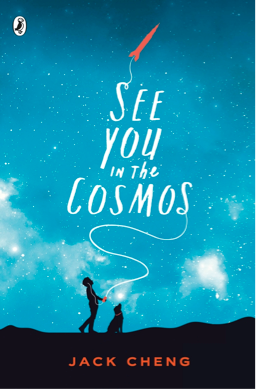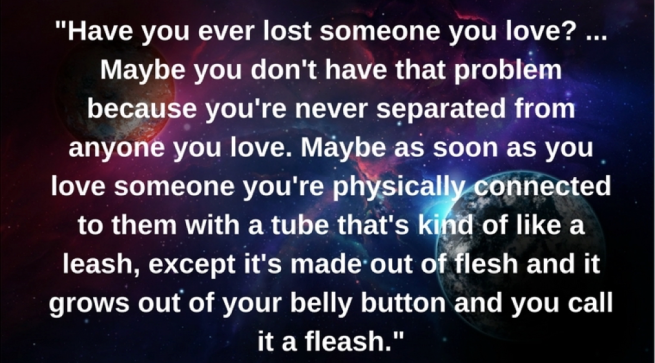
The MG at Heart team is back again with a mid-month post about our February pick, Jack Cheng’s See You in the Cosmos. Eleven-year-old Alex Petroski narrates the entirety of this charming debut novel to the aliens he hopes to teach about Earth via a series of conversations recorded on a golden iPod. He got the idea from his hero, Carl Sagan, who created the Golden Record, which was launched into space in 1977.
An entire book narrated to aliens sounds like an unusual choice for a middle-grade novel, but Cheng’s incredible voice makes See You in the Cosmos a heart-warming and compelling read. It really sounds like Alex is telling us the story. And one of the reasons for that is Cheng’s use of sentence length to create a very realistic voice-like cadence. In some parts of the story, Alex’s voice comes through as breathless because of the long, stream-of-consciousness sentences, while in others, the use of ellipses and em-dashes reflects the tense or deeply upsetting scenes.
American author and writing instructor Gary Provost had this to say about varying sentence length in writing:

It’s no surprise that he uses terms like “music,” “lilt,” “drums,” “cymbals,” and “harmony,” because varying sentence length is a way to add musicality to your writing. But it can also convey both pace and character. And that’s what Cheng does so well in this story.
If you’re joining us in reading See You in the Cosmos this month, you know this is a book that can make you laugh and cry, sometimes in the same scene. See if you can spot instances of Jack Cheng using Alex’s somewhat quirky voice and perspective in combination with varied sentence length to evoke a certain emotion. And please share other examples in the comments on this post or on Twitter at #mgbookclub.
From the very first page, the story uses interesting sentence and paragraph structure to engage the reader:

Sentences from one to 22 words not only convey a LOT of information about Alex’s personality, but they create an inviting and conversational tone.
Look at how the series of “and…and…and…and” here creates a sense of a building storm:

And how the stream-of-consciousness format of the following quote shows us real-time how Alex grapples with the tough emotions that are explored in this story. You can almost hear his mind whirring as he figures things out:

Whether you’re writing something of your own or working with kids on their creative writing, look for ways that you can use sentence length to convey emotion and voice in your writing. In See You in the Cosmos, Jack Cheng often uses this technique to create the voice-like cadence that is one of several interesting and unique things about the story.
Happy reading and writing, and make sure you’ve subscribed to the Middle Grade at Heart newsletter so you won’t miss this month’s edition, which goes out on February 26th and will include an author interview, an activity, a recipe, and other great content for See You in the Cosmos. And we look forward to chatting with you about the book on our Twitter book chat on March 6th!
